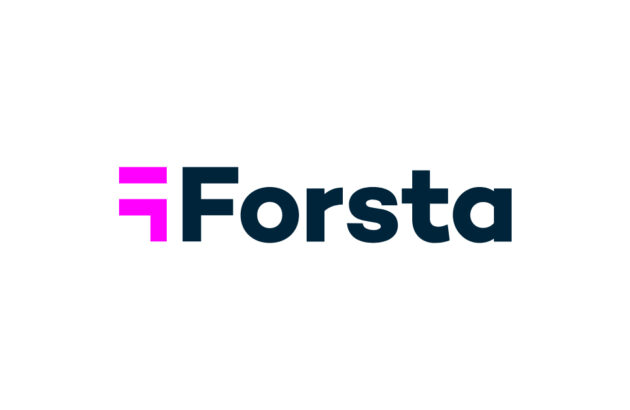Successful launch of a continuous listening program

I read recently an interesting report from Corporate Research Forum (CRF) headlined Harnessing the HR Technology Revolution. Even though the findings and conclusions in the report mainly refer to technology used by HR more broadly, such as HR, Talent and Workforce Management systems, it is astonishing how well they fit into the context of employee research too.
In order to enable organizations to be more agile and dynamic when surveying their people, many of our clients consider bringing the survey capability in-house. Keeping that in mind, the CRF report defines five barriers that HR has to overcome before making an investment in technology. Here I share a little about those barriers – and my views on how they impact the idea of continuous listening.
HR technology never solves anything
HR leaders need to guard against the natural tendency to want to believe that technology on its own will solve a pain point. Technology always needs to be implemented as one part of a broader change initiative. Technology change should, therefore, be the trigger for revisiting existing policies and processes to make sure they are clear, well-communicated and properly understood.
Reflections on Continuous Listening: One of the key challenges in employee research has always been how to motivate and activate managers to act upon survey results. I’m sorry but I have to disappoint you, no new flashy technology will take the responsibility away from a report owner to tackle the issues identified and have a dialog with his/her colleagues. Action planning is about change and about managers’ readiness to change, sometimes even their own behaviors.
No one is starting from a clean slate
We can’t let the dream of a clean slate obscure our vision of the reality of how dirty our existing slate likely is. It is possible to go from a mess of different systems and processes to a better unified system; however, it takes discipline, constancy of purpose and expertise.
Reflections on continuous listening: We have frequent discussions with clients who want to transition from one way of surveying to another. Initially, there is a strong emphasis that we don’t need to feel restricted by the past, but when discussions continue, it becomes apparent that influential stakeholders within the client organization are reluctant to let the past go. In practice, it means that the change is a gradual process and a bridge between the past and new ways of Employee Listening is required.
Data quality is poor and there is no easy fix
Issues in data governance go well beyond HR, so HR leaders shouldn’t take on this challenge on their own. They also need to accept that they may have to live with poorer data quality than they would like for many years and hence learn how to get the best from the data they have.
Reflections on Continuous Listening: Most online surveys today are to some extent pre-populated with background information derived from an HRIS. Quite recently, I asked one of my clients how she would describe the overall quality of the data in their HRIS. As a response, I got an all revealing heartfelt laughter. As employee surveys are becoming more agile through pulse and always-on surveys, organizations have to accept that trying to achieve 100% data accuracy is unrealistic and a wasted use of scarce resources. Let’s instead try to define quality levels that are good enough!
Implementation and change management capabilities often fall short
HR leaders need to take a firm stand against taking shortcuts in implementation and change management since these shortcuts often lead to lingering problems and excess costs. It’s important that business leaders are seen as early adopters rather than being shielded from the change by HRBPs. HR leaders also need to ask whether HR has the quality and quantity of staff who can handle the complexities of technology implementation. Are you burning out the few really qualified people you have by asking too much?
Reflections on Continuous Listening: When embarking on a journey to shift the way you measure employee experience, it is important to have a clear strategy in place and commitment from senior leaders to deliver the strategy. Agile and dynamic ways of employee listening empower the organization, managers and other stakeholders, to get feedback and insight from employees as frequently as required. The ownership of the “tool” sits clearer than ever with managers (end-users), and with ownership follows responsibility to use the tool in an appropriate manner. Some managers might be ready for this, but it would be foolish to think all managers would be equipped with the appropriate mind-set from day one.
Regulation, privacy and security issues have become pressing
HR leaders need to accept that many of the issues around security can be mindboggling even to experts who specialize in the field. Similarly, society’s views on what information needs to be private and how to keep it that way are in flux. Regulations that are new and wide-ranging (like the GDPR) are not easily handled. The best path for HRDs is to ensure these issues are being addressed at a corporate level. They also need to face the fact that doing nothing is not a good option and that HR needs to press forward with new technology while managing the risks and unknowns.
Reflections on continuous listening: Personally, I think GDPR has done the employee research industry good! It has forced different players in the field, both clients and consultancies alike, to assess and reflect on their current survey practices. What is the data for? Do we really need results on this granular level? As mentioned before, a survey will never be able to give answers to all questions, it will still remain just one source of information that has to be assessed in broader context when reaching conclusions or making decisions.
If HR and other stakeholders do proper preparation upfront, set the expectations from the outset, and upskill managers accordingly, introduction of an agile and dynamic employee listening program can give a tremendous boost to the business and position HR as a true enabling business partner.
Related stories
Why CX programs matter: The proof is in the tech
Content Despite all the buzz around delivering a positive customer experience, some still see Customer Experience (CX) management as soft science, as more PR than performance. And you can’t blame them. Early CX programs were long on surveys and short on outcomes. For years, NPS ruled the roost, offering scores without context and feedback without […]

Research HX deep dive: Data collection
Research HX deep dive: Data collection Smarter research starts with stronger data Every insight begins with a single data point. But when that data is scattered, inconsistent, or locked in outdated tools, the road to said insight is long, slow, and full of potholes. Data collection is the foundation of market research, yet inefficiencies cost […]

Research HX
Many feedback programs measure Net Promoter Score movements, but few can reveal the “why” of customer behavior. Forsta’s HX Benchmarks puts performance in context so you can understand what great experiences look like for your customers. Learn more about the human-centered intelligence you need to outperform the market.

Learn more about our industry leading platform
FORSTA NEWSLETTER
Get industry insights that matter,
delivered direct to your inbox
We collect this information to send you free content, offers, and product updates. Visit our recently updated privacy policy for details on how we protect and manage your submitted data.